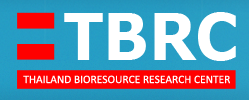Basionym: Phytocordyceps ninchukispora C.H. Su & H.H. Wang, Mycotaxon 26: 338 (1986)
Anamorph state: Isaria-like, Lecanicillium-like, shows a lot of morphological plasticity
Description:Specimens were in the ground or in the leaf litter. Hosts are lepidopteran pupae - Limacodidae. The fungus produces multiple bright orange stromata on the insect pupa, mostly erect up to 3 cm high. Fertile part is at the upper half of the stroma. Perithecia narrowly ovoid, orange, superficial and tightly packed perpendicular to the stroma, ca. 300-450 µm long, 85-190 µm in diam. Asci cylindrical, 8-spored, 200-240 x 2-2.5 µm. Ascopores whole, skipping-rope shaped, up to 200 µm long. In culture the colonies on PDA are relatively fast growing, attaining a diam. of 4-6 cm in 14 d at 25°C. Colonies floccose with areas looking powdery containing sporulating conidiophores. Colonies white changing to orange when the synnemata starts to develop. Cordyceps ninchukispora can be found throughout Thailand from as far north in the mountains of Doi Inthanon until the rainforest of the south. The limacodid pupa resembles a seed and this can lead to assumptions that the host is a plant seed and not an insect. The genus Mariannaea has been linked with Cordyceps ninchukispora but the type species, Mariannaea elegans, is in the Bionectriaceae. For now we consider the anamorph to be better compared with Isaria/Lecanicillium.
References:Su, C.H. & H.H. Wang. (1986). Phytocordyceps, a new genus of the Clavicipitaceae. Mycotaxon 26: 338. Sung, G.-H., Hywel-Jones, N.L., Sung, J.-M., Luangsa-ard, J.J., Shrestha, B. & Spatafora, J.W. (2007). Phylogenetic classification of Cordyceps and the clavicipitaceous fungi. Studies in Mycology 57: 5-59.
Search this species at:
THAILAND BIORESOURCE RESEARCH CENTER

